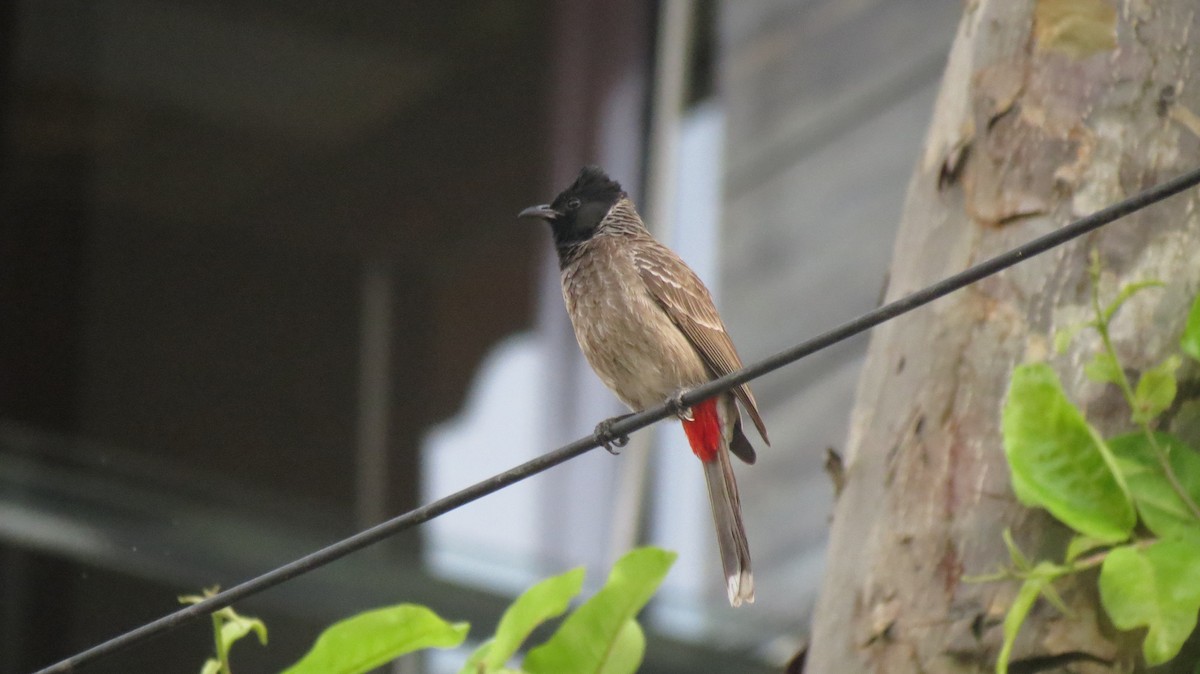This large stork has a heavy yellow beak with a down-curved tip that gives it a resemblance to an ibis. The head of the adult is bare and orange or reddish in colour. The long tertials are tipped in bright pink and at rest they extend over the back and rump. There is a distinctive black breast band with white scaly markings.Painted storks feed in groups in shallow wetlands, crop fields and irrigation canals. The maximum success of finding prey was at 7 cm of water depth at Keoladeo-Ghana National Park. They feed mainly on small fish which they sense by touch while slowly sweeping their half open bill from side to side while it held submerged.
White - Eared Bulbul
A dark, sleek, medium-sized bird with a black crest and a white rump. The red color under the tail is often difficult to see. Eats fruit, flower buds, and insects. Conspicuous and sometimes gregarious, often seen high in trees or perched on wires in urban and rural areas; generally prefers scrubby edge habitat instead of dense forest. Calls include a variety of chirps and whistles. Native to South and Southeast Asia. Introduced to Kuwait, Qatar, United Arab Emirates, Oman, and Polynesian Islands, including Hawaii.
A large wader with a white body and bare black head and neck. Males and females look similar
and both have grayish tail feathers.It probes into mud and shallow water with its long, down
curved black bill, sometimes submerging its entire head. Found primarilyaround wetlands
including agricultural fields and occasionally around coastal areas, but also seen foraging in
dry fields and human-modified landscapes.
Lesser FlamingoThe smallest flamingo in the world, with
a dark bill and red legs. Note glowing
red eyes in adults. Juveniles are
gray-brown and darker than young Greater
Flamingos. Found in alkaline lakes and coastal
lagoons, where gathers in huge flocks to eat microscopic blue-green algae. Breeds on remote
flats sheltered from predators. Migrates and breeds in response to changing environmental
conditions.
During the boat ride we a huge flock of flamingoes and their flight was spectacular. I am
mentioning this as it was amazing and for me, one of the best moments of the whole trip.
Intermediate Egret
A stocky egret that is larger than Cattle and Little Egrets, but smaller than the Great Egret.
Often confusing and difficult to identify, this bird is truly intermediate between potential
confusion species. Things to look for include a yellow bill that is shorter than Great Egret but
longer than Cattle Egret, a relatively rounded head, and shorter legs than Great Egret,
approaching Cattle Egret. In Asian populations the bill becomes black during the breeding
season; these birds can be distinguished from Little Egret by their completely black feet and
shorter bills. Like most egret species, associates with all types of water bodies including wet
fields and usually flocks with other egrets.
Though I got to see a lot of birds and thoroughly enjoyed the trip there was one thing that disturbed me a
lot...the amount of trash. Not only the sewage, people had thrown garbage on the trails and even in the
branches of some trees. I feel this is one of the major problems leading to the extinction of birds and that
we should try to stop it or reduce it.












No comments:
Post a Comment